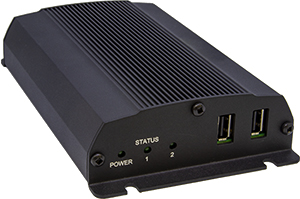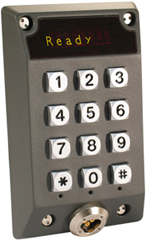Web Authorizers

|
The CyberKey Web Authorizer Hub is a remote interface designed to allow a
computer and a key to exchange information via an Ethernet network connection
or over the Internet. This allows a CyberLock system spread over a large
geographical area to be controlled from one location. The Web Authorizer Hub
works with Enterprise software version 1.4 or higher as a web client. It communicates
via https with the option of DHCP or static IP address selection.
In addition to being a remote terminal, the Web Authorizer Hub stores key configurations. Local storage allows it to program a key using a stored configuration when it doesn't have a current connection to the CyberAudit-Web server. With each communication session with a CyberKey, it downloads and stores the audit trail of known keys that connects with one of its keyports. It then sends the audit trail data to the server the next time it has a connection. The CyberKey Web Authorizer Hub is made of black powder coated extruded aluminum, and supports (3) RJ-45 connections, as well as USB connections for programming. Dual LED lights indicate power and status. |

|
The CyberKey Authorizer keyport is part of the CyberKey Authorizer system. It requires an Authorizer hub to function. It has a single line, eight character display and twelve keys for entering a PIN or other information. The keyport includes mounting hardware for a single outlet electrical box. A Cat-5 patch cable provides power and communication from the Authorizer hub. It can be placed up to 200 feet away from the hub, outside of the first lock (entryway) of the local CyberLock system. A second keyport can be added at any time. Installing a Keyport How to add a Web Authorizer |
A second generation Web Authorizer was introduced in 2019 which significantly increased memory and processing speed, supports TLS 1.3 protocol, and adds support for all Generation 2 CyberKeys.

